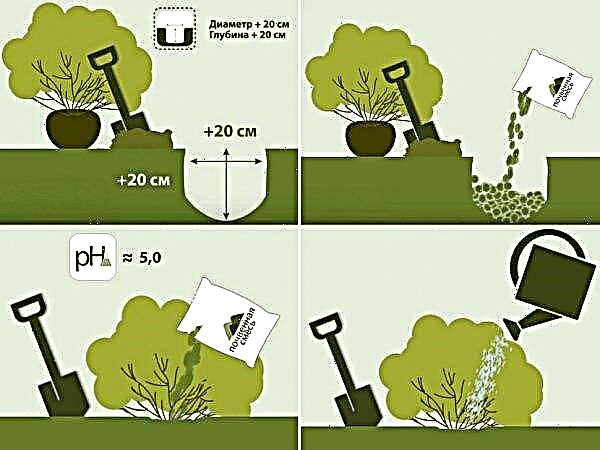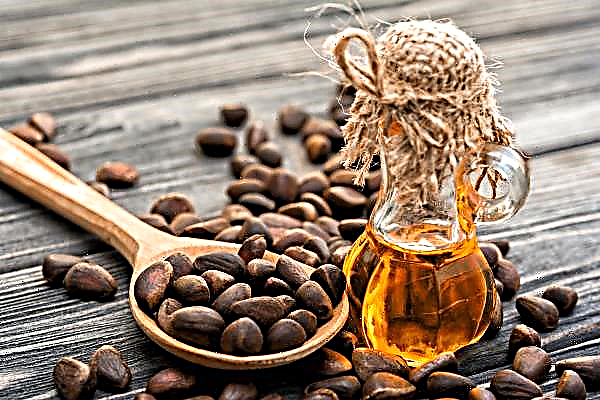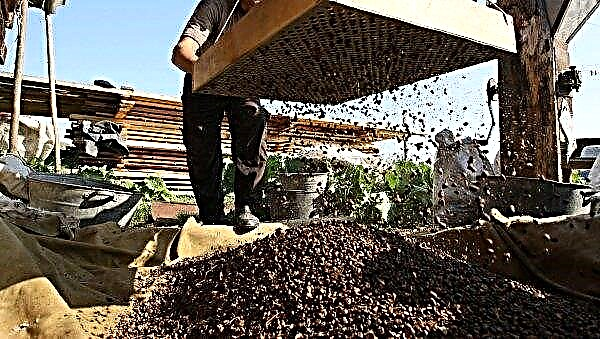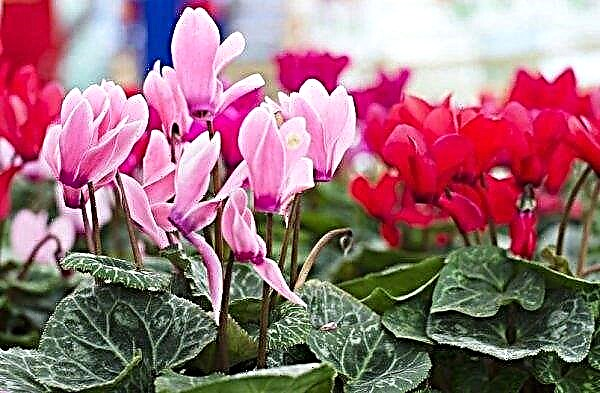It is not for nothing that the orchid is considered to be a finicky indoor flower, because for its constant flowering and high decorativeness a number of requirements will have to be observed. Violations in the care often cause unpleasant consequences, sometimes expressed in the fall of unblown buds. To avoid such a nuisance in the future, it is important to understand the possible causes of such a phenomenon and take into account some recommendations for caring for the plant, which will be discussed later.
Why do orchid buds not bloom
Any violation of the conditions for growing and caring for the orchid is fraught with a change in its usual life cycle, therefore it is not surprising that failure to comply with the requirements for watering, lighting, humidity and temperature in the room can lead to bud dropping. Let's consider each possible reason more closely.
Violation of the conditions of detention
For flowering plants, one of the most important factors is considered to be a sufficient level of lighting, therefore, with a reduction in daylight hours, their decorative effect is also reduced. In the summer, this problem usually does not arise, but with the onset of the cold season it would be wiser to think about additional artificial light sources so that the total daylight hours are at least 12 hours a day. The level of lighting in the room will not affect the orchid with flowers already blooming.
Did you know? Orchids are rightfully considered leaders in terms of seed productivity, because only one such plant can produce up to 4 million seeds.
When assessing the conditions for growing a flower, it is also worth paying attention to the dry air in the room. Together with inadequate lighting, this is one of the most common causes of falling buds. In the heating season, hot batteries or other heating systems are the culprit, so it’s useful to place wide containers with water next to them. You can periodically hang wet towels on the batteries themselves, which should also increase the humidity in the room. If possible, an air humidifier, which will be enough to turn on just a few times a day for 30-60 minutes, will not hurt.
Wrong watering
Violation of watering can be attributed to both insufficient fluid intake and overflow of the flower, and the latter is much more common. Excessively plentiful watering of an orchid threatens to rot its root system, which causes the fall of not only buds, but also leaves. To avoid this, it is worthwhile to focus on the state of the upper layer of the substrate: it is better to carry out the next application of the liquid only when the soil dries at least 1-2 cm after the previous time.
Also do not forget to monitor the quality and temperature of the water: it must be a settled liquid, with temperature values in the range + 18 ... + 23 ° C.
Draft
If in the summer the draft is not so terrible for indoor plants, then with the advent of autumn the situation may change. So, even a short-term effect of a cold wind on an orchid can lead to falling of the formed buds, so during regular ventilation of the room (it is necessary for all domestic vegetation), make sure that the flower does not get in the way of the air flow. In winter, it is better not to risk it and immediately remove the plant from the windowsill, returning it to its place only at the end of the procedure. Also, do not place the pot under air conditioning, especially in the summer, when its main task is to cool the space.
In winter, it is better not to risk it and immediately remove the plant from the windowsill, returning it to its place only at the end of the procedure. Also, do not place the pot under air conditioning, especially in the summer, when its main task is to cool the space.
Abrupt change of conditions
Orchid - a delicate flower that requires a certain constancy in the growing conditions. Even a short stay in the cold, with further placement in a warm room, is fraught with falling buds that have set. For this reason, it is better to pack the flower purchased in the winter during transportation in a box with several layers of paper, which should protect it from the effects of frosty air.
Important! For most varieties, the optimum cultivation temperature will be + 18 ... + 28 ° C during the day and + 13 ... + 25 ° C at night, and this difference is important for good and abundant flowering. If the room is very hot, then at night it is advisable to take the orchid to a cooler place.
Another reason for falling buds can be prolonged exposure to direct sunlight, with further sharp movement to distant parts of the room. Having warmed up well in the sun (at a temperature of about + 30 ° C or higher), and then found in a cool place, not only the buds, but also the opened orchid flowers begin to fall off. The oldest are crumbled first, and then the turn comes to young specimens.
Other reasons
Sometimes an orchid drops buds due to a violation of the feeding regimen or the use of an inappropriate growth stimulator. Excessive care, as well as inadequate care, can lead to undesirable consequences, so try to be careful in everything, thereby protecting the plant from stress. It is not necessary to exclude from the possible causes of flowering disorders and natural processes associated with the real age of the flower.
Indoor orchid lives only 7-15 years, but after 5 years the probability of slowing down or immediately complete cessation of flowering is very high. She can still form flower stalks and even buds, but flowers from them will never appear, since all of them will fall off sooner or later. There is nothing to be done about it, and it is better to purchase a young plant.
What to do and how to save an orchid
If the orchids massively fall off the buds, then save them will not work.
Did you know? Orchids are considered one of the oldest families of flower crops that appeared on Earth about 145 million years ago. Today in the world there are approximately 25 thousand species of these beautiful and delicate flowers.
However, you can still prevent such a nuisance in the future, for which it is important to follow these steps:
- Collect all the fallen buds and allow the soil in the pot to dry well, temporarily limiting the usual watering.
- Having prepared a new pot with a suitable soil substrate, transplant the plant, having previously removed all damaged and decayed sections of the root system.
- Look for an orchid more suitable place for growth and development, especially if one of the reasons for the dropping of buds was the high temperature or increased dryness of the air in the room.
Video: why the buds turn yellow and fall
How to care for an orchid during the flowering period
During the flowering period, all plants need increased attention, which cannot but affect the features of caring for them.
Important! Not all orchid varieties respond equally well to universal nutritional formulations in the quantity indicated by the manufacturer, so before using complex formulations, be sure to find out if the recommended dosage should be halved. Excessive fertilization can ruin an orchid.
First of all, pay attention to the following general rules:
- Water. The temperature of the irrigation liquid should not exceed + 30 ° C, and the ideal option for the procedure would be to place the flower under a shallow shower.
- Temperature indoors, during flowering, it should not fall below + 23 ... + 25 ° C, and to stimulate the process, you can specifically increase it by 2-3 degrees in comparison with the usual values, since all orchids are heat-loving plants.
- Transfer during flowering is unacceptable, because any stress can result in the dumping of all buds and flowers, with a long process of restoration of the plant itself.
- Fertilizer. For lush and plentiful flowering, the introduction of nutritional compounds is a prerequisite. When choosing top dressing, preference should be given only to mineral additives intended specifically for decorative-flowering varieties of plants or the orchids themselves (for example, “Biokon” or “Mr. Color”). When using nutrient mixtures, always adhere to the dosage recommended by the manufacturer.
 Equally important for the subsequent formation of beautiful buds is the care of the orchid immediately after flowering.
Equally important for the subsequent formation of beautiful buds is the care of the orchid immediately after flowering.In this case, there are also several features worth knowing about:
- For the full formation of new peduncles, old and faded parts must be immediately removed from the plant.
- In order for orchids to recover faster after flowering, it is worth using only special complex fertilizers specifically for these flowers for top dressing.
- Watering should be moderate, because waterlogging for a weakened plant is more likely to end with rotting of the root system.
Preventative measures
It is always easier to prevent a problem than to deal with it, therefore, prevention of falling of unblown buds should interest every orchid owner. In this case, the following actions can be attributed to preventive measures:
In this case, the following actions can be attributed to preventive measures:
- Placing a flower in a suitable place for it immediately after the purchase or transplant, with a further change in the conditions of detention only in extreme cases.
- Prevention of possible hypothermia of the plant, especially in winter. If it becomes very cold in a room with a flower, it is better to move it deep into the room, away from the cold window sill. When using heating equipment (for example, fireplaces or air heaters), it is better to place them away from the orchid.
- Elimination of drafts in a room with flowers. Direct exposure to cold or warm air currents is also not permitted.
- Organization of competent watering. It should be dosed and moderately plentiful, especially during the appearance of the flower arrow.
- Protect orchids from direct sunlight in the hot season.
Subject to these simple rules, your orchids will always delight others with their delicate flowers, and the problem of falling buds will remain only a theory.












